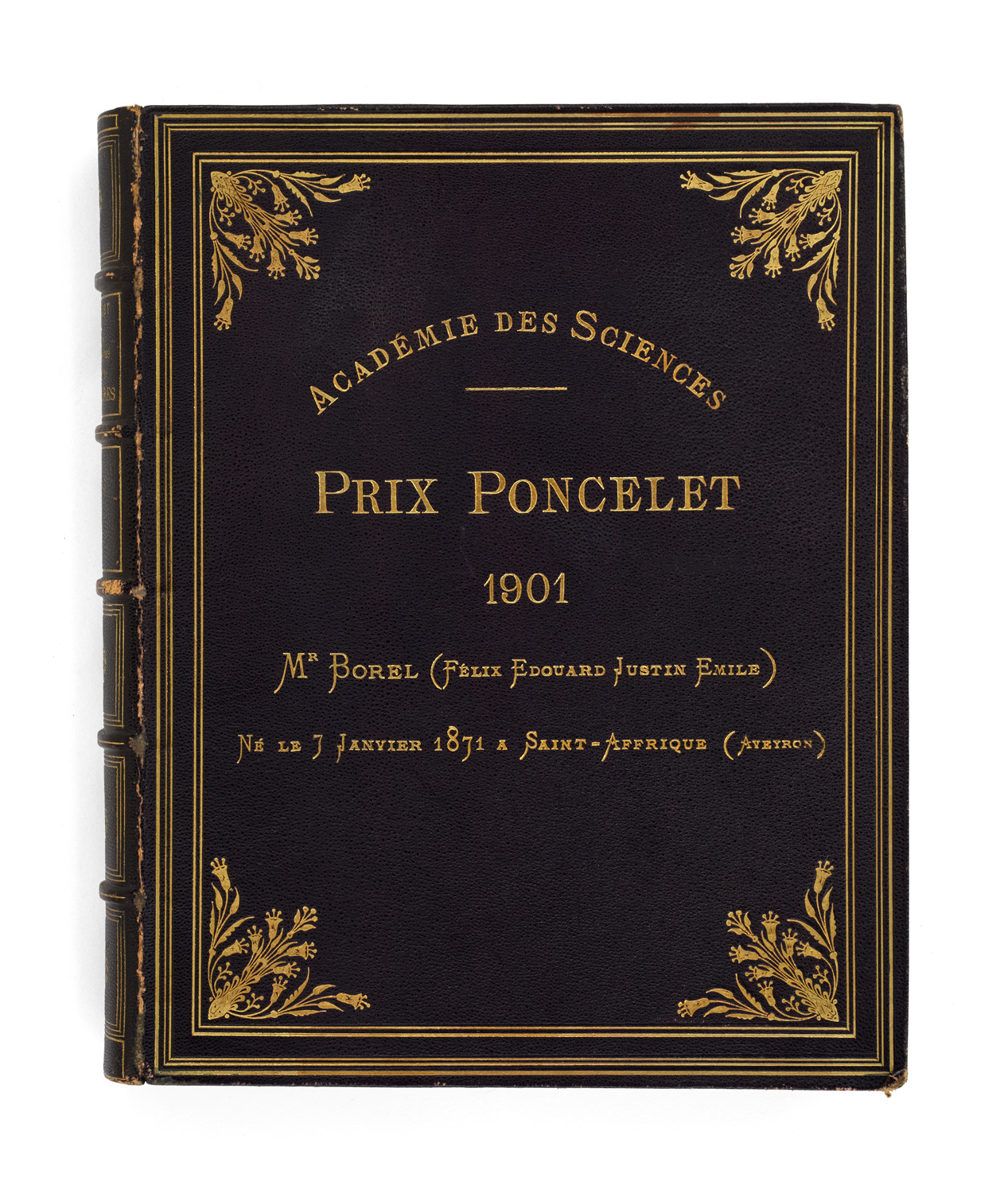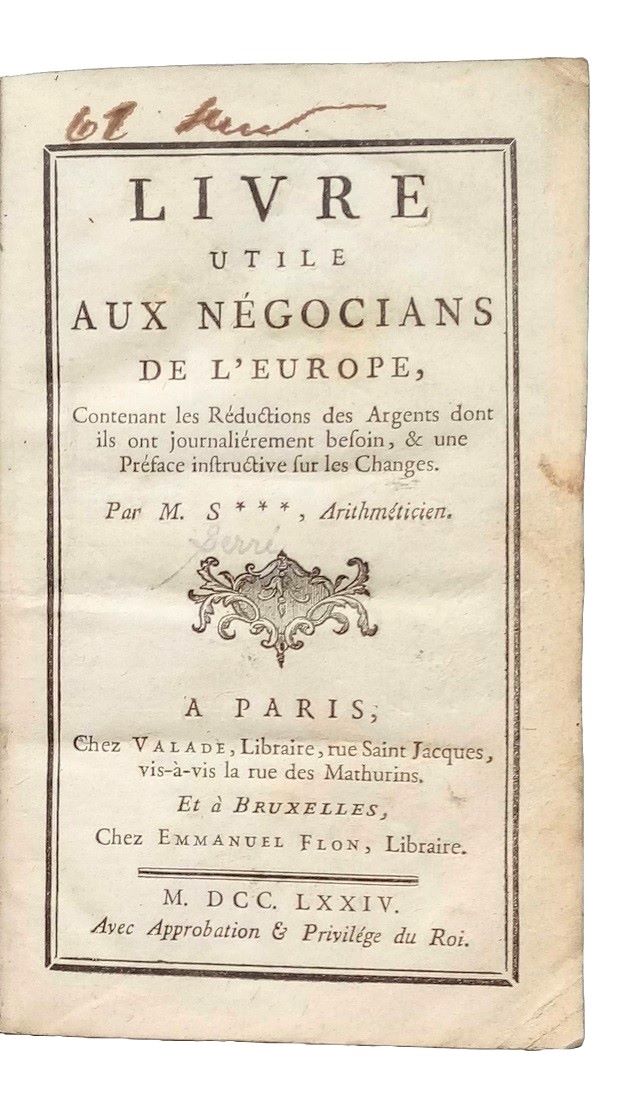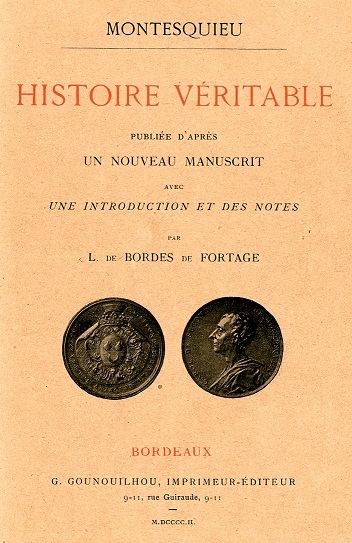
PRIX PONCELET PRIZE BOOK WON BY ÉMILE BOREL
PONCELET, Jean-Victoire.
Traité des propriétés projectives des figures, ouvrage utile à ceux qui s’occupent des applications de la géométrie descriptive et d’opérations géométriques sur le terrain.
Paris, Gauthier-Villars, 1865-1866.
Two vols, 4to, pp ix, [1 (blank)], [ix]-xxxii, 428; viii, 452; 12 and 6 engraved plates with line diagrams of geometrical figures by Dembour and Dulos after Poncelet, bound to throw clear, equations in the text; very occasional very light spotting in vol. I, very light offsetting from plates onto facing ll.; early twentieth-century richly gilt black morocco, boards with triple- and double-fillet gilt rule frames and large gilt floral cornerpieces, upper board of I lettered in gilt, gilt panelled spine, all edges and turn-ins gilt, cream watered silk endpapers, silk markers intact; extremities rubbed and bumped, first few leaves of vol. I slightly shaken, generally a very good copy; Émile Borel’s copy, his name gilt on the upper board of vol. I and stamped on the free endpapers of vol. II.

Added to your basket:
Traité des propriétés projectives des figures, ouvrage utile à ceux qui s’occupent des applications de la géométrie descriptive et d’opérations géométriques sur le terrain.
Second edition, revised and enlarged, Émile Borel’s prize copy. A finely bound, well-preserved, and prestigious association set.
Borel (1871–1956), the French mathematician best known for his work in measure theory and probability theory, was awarded several honours in the early twentieth century, when his career truly started to blossom: among them, in 1901, the Poncelet Prize, for which he received money as well as this handsomely bound set of the improved edition of the defining geometrical work of Jean-Victoire Poncelet (1788–1867). Given Borel’s interests in applied geometrics, these volumes were particularly appropriate: they derive from Poncelet’s work on the properties of geometrical figures, composed while Poncelet was imprisoned as part of Napoleon’s army in Saratow, Russia (March 1813 to June 1814).
In his History of Geometrical Methods (1940), Julian Coolidge wrote about the Traité (then simply known as ‘Poncelet’) as a ‘great work’ and admitted to giving ‘more attention to Poncelet than to previous writers on projective geometry because he really saw far deeper. He placed the subject in the right light’ (Dover reprint, 2003, pp. 93 and 95). Here presented in the second edition, revised and enlarged by Poncelet just a couple of years before his death, it also includes the ‘avertissement’ or preface for the second edition.
Established by Poncelet’s widow for the advancement of the sciences, especially applied mathematics, the Prix Poncelet was first awarded by the French Academy of Sciences in 1868, and annually thereafter. Borel lived through both World Wars, was decorated for his efforts in the First War and later became active in the French government, among other things, working for the Resistance.

